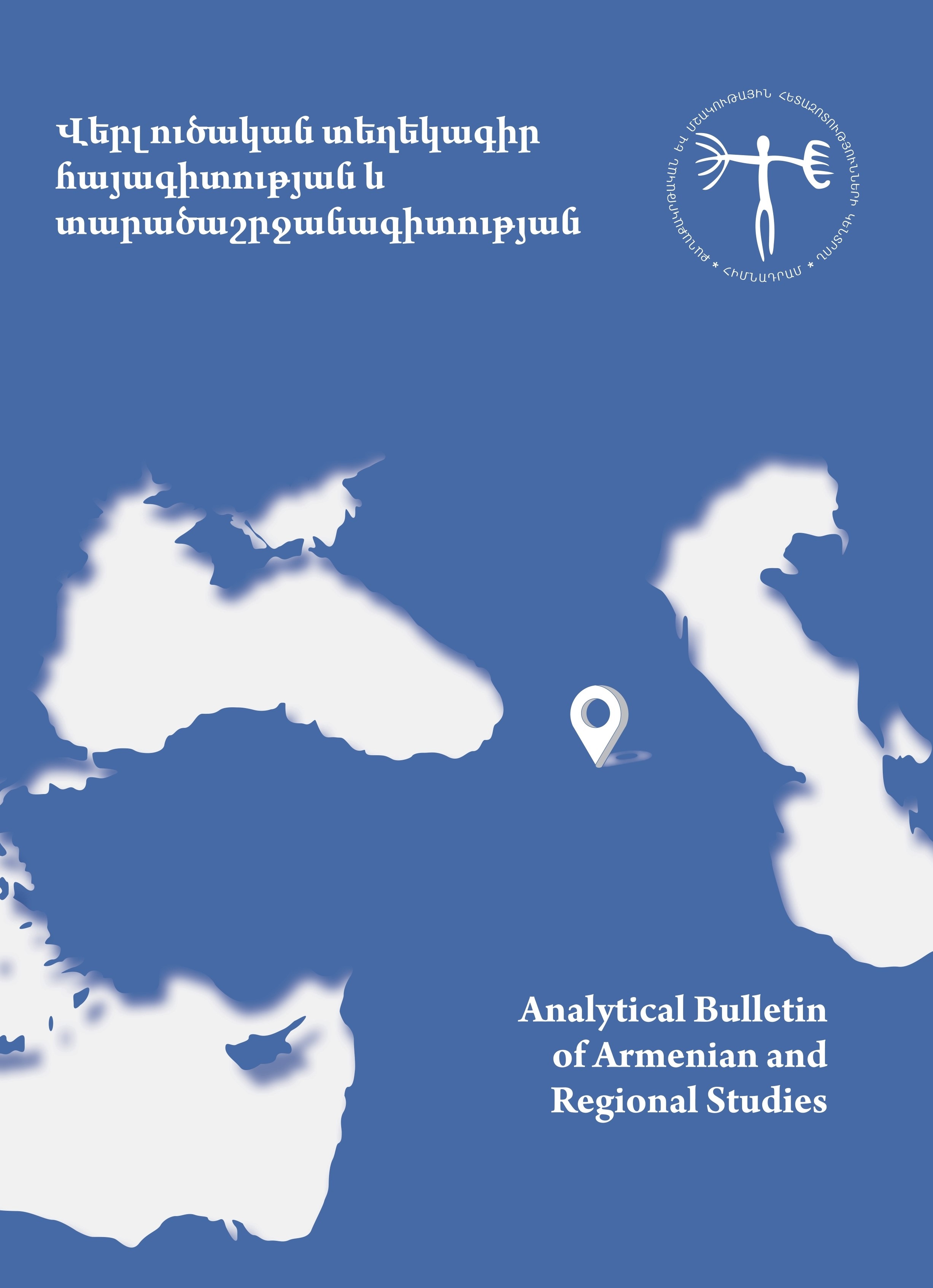The Armenian-Georgian Window of Cooperation from the Economic and Geopolitical Viewpoint
Keywords:
Armenia, Georgia, EEC, EU, economic cooperation, geopolitical barriersAbstract
After the formation of the EEC, the trends in regional development started to change and the previous setup of cooperation between Georgia and Armenia shifted. The environment of uncertainty that was created and short-term expectations led to a recession in the economic cooperation between the two countries.
The current trends in the political context indicate the intention of both countries to foster cooperation. Meanwhile the “geopolitical barriers” require commitment and investments from Armenia and Georgia to keep this mutually beneficiary cooperation at the level of 2013. However, Armenia and Georgia are still in the same boat given the geopolitical location of both countries. Even if the two countries chose to move in different directions, a need for mutual cooperation will make them look for opportunities.
References
www.eeas.europa.eu/eastern/index_en.htm
www.eeas.europa.eu/enp/
www.eu2013.lt/en/news/-joint-declaration-of-the-easternpartnership-summit-vilnius-28-29-november-2013
Minasyan, S. Armenia and Georgia: A New Pivotal Relationship in the South Caucasus? // PONARS Eurasia Policy Memo No. 292, September, 2013
www.pf-armenia.org
www.euractiv.com/topics/dcfta
Mesropyan H. European Union or Eurasian Union, Eastern Partnership Countries Dilemma: Comparative Case Studies of Armenia and Moldova regarding the Initialisation of the Association Agreement, 2014, unpublished
Dinan, D., Ever Closer Union: An Introduction to European Integration, 2010
Archick, K., European Union Enlargement (Vols. 7-5700). USA: Congressional Research Service, 2013
Zahorka, Sargsyan, The Eurasian Customs Union, an Alternative to the EU’s Association Agreements? Wilfried Martens Centre for European Studies, 2014
Delcour L., Wolczuk K., Armenia is becoming an important test-case for relations between the EU and the Eurasian Economic Union, May 15, 2015. Retrieved July 4, 2015, from LSE EUROPP: European Politics and Policy: http://bit.ly/1cwsgEO
Kambeck M., Between the Big Blocs: Armenian Foreign Policy Untangled,Wilfried Martens Centre for European Studies, June, 2014
Giragosian R., Armenia and the Eurasian Economic Union: The view from Yerevan, Yerevan: European Council on Foreign Relations, January 8, 2015
Armenia Monthly Economic Update. WorldBank, March 2015. http://www.worldbank.org/content/dam/Worldbank/document/eca/armenia/armeniaeconomic-update.pdf
Giragosian, R. Armenia's Role of Balancing Interests. Richard Giragosian on Armenia's Role of Balancing Interests. (© C. University, Interviewer), 2 June, 2015). www.ceu.edu/article/2015-06-02/richard-giragosian-armenias-rolebalancing-interests#sthash.YlqZKIFs.3Fd5Rbau.dpufv
ITAR-TASS: Russian News Agency, September 28, 2014. Retrieved June 26, 2015, from www.tass.ru/en/world/751695
Implementation of the European Neighborhood Policy in Armenia: Progress in 2014 and recommendations for actions. High Representative of The European Union For Foreign Affairs And Security Policy. Brussels: SWD, 2015, 63 final
Asian Development Outlook: Georgia 2015 //Asian Development Bank and Georgia: Fact Sheet Publication. April 2015
Press release "Eastern Partnership: progress in deep democracy and human rights rewarded with additional funding". European Commission, Brussels, December 12, 2013
Morari C., European Integration of Georgia and The Republic Of Moldova: Evolution And Prospects // People. International Research Staff Exchange Scheme, Seventh Framework Programme, Marie Curie Actions. 2013
Puiu et al, Georgia, Moldova, Ukraine: EU-Dreaming despite the Difficulties, May 27, 2015. Retrieved June 5, 2015, from Eurasianet: http://www.eurasianet.org/node/73611
Menabde G., Georgia and Armenia Try to Maintain Friendship Across Geopolitical Barriers // Eurasia Daily Monitor, vol., 11 Issue: 225, 2014, http://www.jamestown.org/programs/edm/single/?tx_ttnews%5Btt_news%5D=43212&cHash=6fa05adae027a8d6809001fc8a7dab23#.VajD-KSqqko
Kalandarishvili, Iskandaryan et al, The Economic Dimension of Cooperation between Armenia and Georgia: Facing New Challenges and Opportunities, Yerevan – Tbilisi: Yerevan, Collage, 2015
Barker A., EU Offers Stronger Ties to Eastern Nations — but Cautiously // Financial Times, May 2015
Iskandaryan A., Barkhudaryan L. et al. The South Caucasus 2018: Facts, Trends, Future Scenarios // Regional Program South Caucasus for the Konrad-Adenauer-Stiftung (KAS), 2015
National Statistics office of Georgia: GEOSTAT http://geostat.ge/index.php?action=page&p_id=137&lang=eng (downloaded 01.08.2015)
Armenian National Statistical Service: www.armstat.am (downloaded on 4.06.2015)





